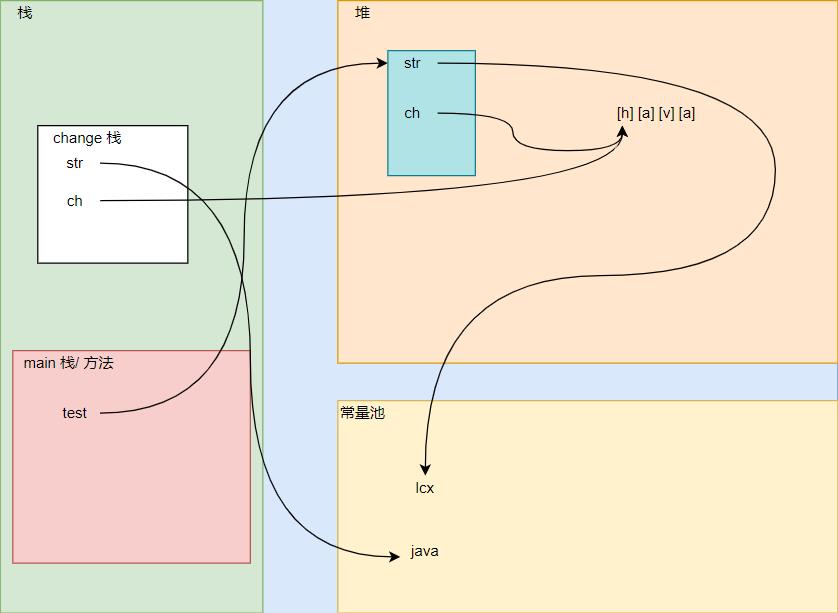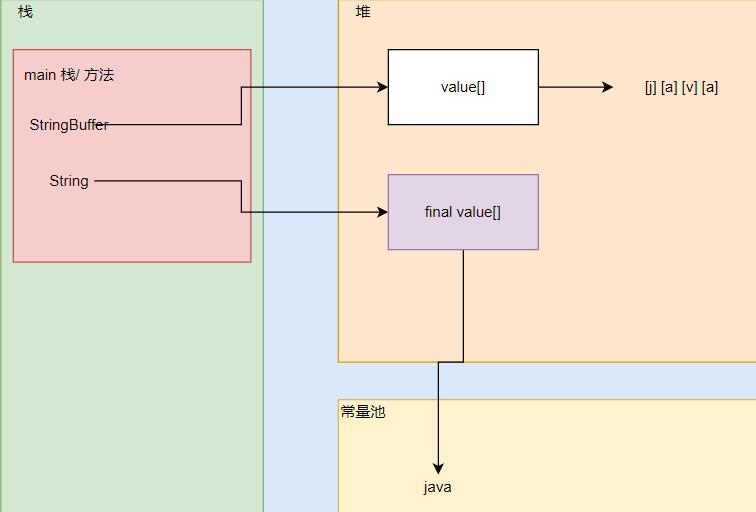常用类
Posted Spring-_-Bear
tags:
篇首语:本文由小常识网(cha138.com)小编为大家整理,主要介绍了常用类相关的知识,希望对你有一定的参考价值。
第13章 常用类
460. 八大Wrapper类
- 除 Boolean 和 Character 外,其余包装类均继承父类 Number

461. 装箱和拆箱
- jdk 5 以前是手动装箱和拆箱,自动装箱底层调用的是对应包装类的 valueOf() 方法
// 手动装箱
Integer integer = Integer.valueOf(i);
// 手动拆箱
int ii = integer.intValue();
462. 包装类测试
Object object = true ? new Integer(1) : new Double(2.0);
// 三元运算符需要看作一个整体,故输出 1.0;if - else 分支结构则输出 1
System.out.println(object);
463. 包装类方法
/* 包装类转 String */
Integer i = 100;
// 方式 1
String str = i + "";
// 方式 2
String str = i.toString();
// 方式 3
String str = String.valueOf(i);
/* String 转包装类 */
String str = "123";
// 方式 1
Integer i = Integer.parseInt(str);
// 方式 2
Integer i = new Integer(str);
464. Integer创建机制
Integer i = new Integer(1);
Integer ii = new Integer(1);
// false
System.out.println(i == ii);
Integer j = 1;
Integer jj = 1;
// true
System.out.println(j == jj);
Integer k = 128;
Integer kk = 128;
// false
System.out.println(k == kk);
- 自动装箱机制,在 [-128,127] 范围内直接返回,否则 new Integer(i)
public static Integer valueOf(int i)
if (i >= IntegerCache.low && i <= IntegerCache.high)
return IntegerCache.cache[i + (-IntegerCache.low)];
return new Integer(i);
465. Integer面试题
- 只要有基本数据类型与包装类型进行比较时,判断的是值是否相等
Integer i = 127;
int ii = 127;
// true
System.out.println(i == ii);
Integer j = 128;
int jj = 128;
// true
System.out.println(j == jj);
466. String结构剖析
- 字符串的字符使用 Unicode 字符编码,一个字符占两个字节(不区分字母还是汉字)
- UTF - 8 编码一个字母占 1 个字节,一个汉字占 3 个字节
467. String创建剖析
// 方式 1
String s1 = "lcx";
// 方式 2
String s2 = new String("lcx");
- 方式 1:先从常量池查找是否有 “lcx” 数据空间,如果有,直接将 s1 指向 “lcx”;没有则新建后指向,s1 最终指向的是常量池的空间地址
- 方式 2:先在堆中创建空间,维护了 String 的字段 value[] 属性,value 指向常量池的 “lcx” 空间;如果常量池没有 “lcx”,则新建;如果有,则通过 value 指向;s2 最终指向的是堆中的空间地址即 value 的地址

468. String测试题1
String a = "lcx";
String b = new String("lcx");
// true:a 指向常量池中 "lcx" 的地址,b.intern() 返回常量池中 "lcx" 的地址
System.out.println(a == b.intern());
// false:b 返回 String 类的字段 value[] 的地址
System.out.println(b == b.intern());
469. String测试题2
String s1 = new String("abc");
String s2 = new String("abc");
// false:s1,s2 -> 不同的 value[]
System.out.println(s1 == s2);
// true:引用到常量池的同一个地址
System.out.println(s1.intern()==s2.intern());
470. String对象特性1
// 只创建了一个字符串常量 "hello123"
String a = "hello" + "123";
// b -> 常量池的 "hello"
String b = "hello";
// c -> 常量池的 "123"
String c = "123";
// d -> 堆中 value,value 指向常量池中的 "hello123"
// 调用 StringBuilder 的 append 方法连接两次,然后再 new String()
String d = b + c;
- 常量相加看池,变量相加看堆
471. String对象特性2
// str 指定堆中的 value,value 指向常量池中的 "lcx"
String str = new String("lcx");
// 字符数组对象存放于堆中
final char[] ch = 'j','a','v','a';
public void change(String str, char[] ch)
str = "java";
ch[0] = 'h';
public static void main(String[] args)
Test test = new Test();
test.change(test.str, test.ch);
// output result: lcx and hava
System.out.print(test.str + " and ");
System.out.println(test.ch);
- 内存布局图

472. String常用方法1
473. String常用方法2
- 调用字符串的 replace() 方法若忽略返回值,则原字符串并未发生变化
- 调用 compartTo() 方法时,若其中一个字符串是另一个字符串的子串,则返回长度之差
474. String常用方法3
475. StringBuffer结构剖析
- StringBuffer 也是一个 final 类,但其字段 value[] 不是 final 类型的;StringBuffer 线程安全
- String 保存的是字符串常量,value 引用到常量池;而 StringBuffer 保存的是字符串变量,数据存放在堆中

476. StringBuffer转换
- StringBuffer value[] 无参构造器默认初始化容量为 16;若构造器传入的是字符串,则初始化容量为字符串长度加上 16
477. StringBuffer方法
String str = null;
StringBuffer stringBuffer = new StringBuffer();
stringBuffer.append(str);
// output:null
System.out.println(stringBuffer);
// NullPointerException
StringBuffer stringBuffer1 = new StringBuffer(str);
System.out.println(stringBuffer1);
478. StringBuffer练习
479. StringBuilder结构剖析
- StringBuilder 线程不安全,与 StringBuffer 使用方法基本一致
480. StringBuilder应用
481. Math方法
482. Arrays排序源码解读
Integer[] arrays = new Integer[]1, 31, 523, 452, 13, 64, 23, 75;
Arrays.sort(arrays, new Comparator<Integer>()
@Override
public int compare(Integer o1, Integer o2)
return o1 - o2;
);
System.out.println(Arrays.toString(arrays));
483. Arrays模拟排序
import java.util.Arrays;
import java.util.Comparator;
/**
* @author Spring-_-Bear
* @version 2021-12-07 20:06
*/
public class Test
public static void main(String[] args)
Integer[] arrays = new Integer[]1, 31, 523, 452, 13, 64, 23, 75;
Test test = new Test();
// 面向接口编程 + 动态绑定(多态)
test.bubble(arrays, new Comparator<Integer>()
@Override
public int compare(Integer o1, Integer o2)
return o1 - o2;
);
System.out.println(Arrays.toString(arrays));
public void bubble(Integer[] arrays, Comparator<Integer> comparator)
int len = arrays.length;
for (int i = 0; i < len - 1; i++)
for (int j = 0; j < len - 1 - i; j++)
if (comparator.compare(arrays[j], arrays[j + 1]) > 0)
int temp = arrays[j];
arrays[j] = arrays[j + 1];
arrays[j + 1] = temp;
484. Arrays其他方法
- 使用 Arrays.binarySearch() 方法对有序数组进行二分查找时,若不存在该元素,则返回该元素应在数组中位置下标的负值
- Arrays.asList() 可以将数组转换为 List 类型的集合,运行类型为 Arrays$ArrayList,即 Arrays 类中的静态内部类 ArrayList
485. Arrays课堂练习
486. System方法
487. 大数处理方案
BigDecimal bigDecimal = new BigDecimal("242131.24321335243234123");
// 为避免结果为无限循环小数,可对结果指定精度以解决 ArithmeticException
BigDecimal res = bigDecimal.divide(new BigDecimal(1.1), BigDecimal.ROUND_CEILING);
System.out.println(res);
488. Date介绍
489. Date应用案例
490. Calendar介绍
- Calendar 构造器私有,可通过 getInstance() 方法获取到一个实例
491. Calendar应用实例
492. 第三代日期使用
- JDK 1.0 中出现的 java.util.Date 类,大多数方法在 jdk 1.1 引入的 Calendar 类中已被弃用,但Calendar 也存在着以下一些问题
1. 可变性:像日期和时间这样的类应该是不可变的
2. 偏移性:年份从 1900 开始,月份从 0 开始
3. 格式化:不能对 Calendar 进行格式化
4. 线程不安全,不能处理闰秒(每隔两天,多出 1s)
- JDK 8 引入的第三代日期类:LocalDate(日期)、LocalTime(时间)、LocalDateTime(日期时间)
493. 第三代日期方法
LocalDateTime now = LocalDateTime.now();
DateTimeFormatter formatter = DateTimeFormatter.ofPattern("yyyy:MM:dd HH:mm:ss");
System.out.println(formatter.format(now));
494. String翻转
495. 注册处理题
496. 字符串统计
497. String内存布局测试题
498. 常用类阶段梳理
以上是关于常用类的主要内容,如果未能解决你的问题,请参考以下文章